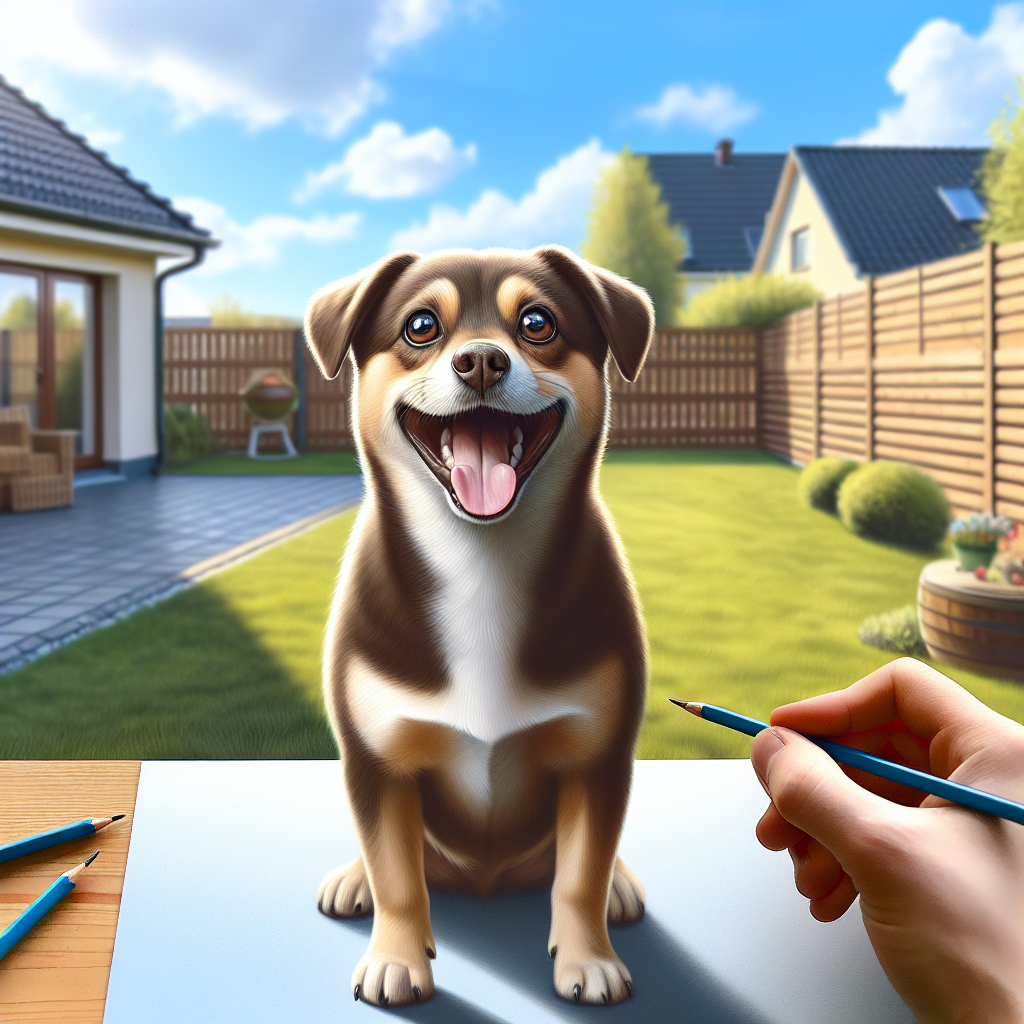Introduction to the Flea Dilemma

Ah, fleas—those tiny, hopping nightmares. If you’ve ever found yourself scratching alongside your furry friend, you’re not alone. These little critters are like uninvited dinner guests that refuse to leave. Getting rid of them isn’t just about comfort; it’s a full-on battle for peace of mind. Flea infestation solutions at home have become a hot topic because, let’s face it, nobody wants to live with roommates who don’t pay rent.
I’ve been in the pet industry for over two decades, and I’ve seen my fair share of flea wars. Trust me, it’s an arena where every pet owner must enter at some point. It’s a rite of passage, albeit a frustrating one. The best way to get rid of fleas in home is not a one-size-fits-all deal. It’s more like a patchwork quilt of tactics, each piece stitched together to form a comprehensive plan.
Understanding Flea Life Cycle
Now, before you can tackle these pesky invaders, you need to understand the enemy. The stages of flea life cycle are a bit like a bad movie that just won’t end. You’ve got eggs, larvae, pupae, and adults. Each stage is more annoying than the last. It’s almost as if fleas have their own little soap opera happening right under your nose—and they breed like there’s no tomorrow.
In my years of dealing with pets, I’ve learned that understanding this cycle is critical. You can’t just deal with the adult fleas and call it a day. Oh no, that would be too easy. You’ve got to think like a flea. Eggs hatch into larvae that avoid light and burrow deep into carpets and cracks. Pupae are the ultimate survivalists, waiting for the right moment to become adults. Knowing this helps you time your counterattacks—because you’re not just fighting fleas, you’re fighting time.
Identifying Infestation Signs
Alright, so how do you know if your home has turned into a flea motel? First things first, recognize the signs of flea infestation in house. It’s not just about seeing a flea jump off your pet like it’s in the circus. No, sometimes these critters are sneakier. You might notice your dog or cat scratching more than usual. Or you might find little red bumps on your ankles in the morning—like some twisted greeting from the flea realm.
From my experience, one way to confirm your suspicions is the good old white sock test. Walk around your house in white socks. If you see tiny dark specks jumping on them, congratulations—you’ve got fleas. It’s a simple yet effective test. Once you recognize a flea problem, it’s time to roll up your sleeves and get down to business.
Initial Steps to Combat Fleas
So, you’ve identified the problem. Now what? The first steps to eliminate fleas are crucial. Imagine you’re a general planning an attack—only your battlefield is your living room. Start with a deep clean. Vacuum every nook and cranny like your life depends on it. Fleas love hiding in carpets, rugs, and fabric furniture. Empty that vacuum bag like it’s toxic waste.
Next, wash all your pet’s bedding at the highest temperature. It’s like giving your pet a fresh start. Some people swear by natural remedies like diatomaceous earth or essential oils, but proceed with caution. Not everything that’s natural is safe for your pet. And remember, the best way to get rid of fleas in home often involves a mix of strategies. It’s not just about one magic bullet—it’s a full-on campaign.
Importance of Pet Treatment
Let’s talk about your furry friends. The importance of pet treatment can’t be overstated. Effective flea treatments for pets are a must. This isn’t just about keeping them comfortable. It’s about breaking the flea life cycle. You’ve got options—topical treatments, oral medications, flea collars. Each has its pros and cons.
In my years of experience, I’ve found that consistency is key. Controlling fleas on pets requires regular treatment, not just a one-time deal. It’s like brushing your teeth; you can’t just do it once and forget about it. Consult with your vet to find the best solution for your pet. Keeping them flea-free is one of the best ways to make sure your home stays flea-free too.
So there you have it—a glimpse into the world of fleas. It’s a battle, no doubt about it. But with a bit of persistence and the right approach, you’ve got this. Thanks for sticking it out with me. Remember, you’re not alone in this. Best of luck in your quest for a flea-free home.
The Battle Begins: Vacuum Like a Pro
Alright, folks, here we go. You’ve got yourself a flea problem. It’s not just you; it’s like a party you didn’t invite them to, but here they are. So, grab your vacuum cleaner—your trusty sidekick in this flea-fighting saga. Vacuuming is more than a chore now. It’s your first line of defense. To get rid of fleas in your home, you need to vacuum like a pro. Corners, crevices, under the couch where the dust bunnies live—hit it all. These fleas are wily little beasts, and they love to hide.
Now, let’s talk about how to vacuum fleas from carpets. You’ve got to go over the same spot a few times. Yeah, it’s a workout, but hey, no pain, no gain. Use attachments to get into those nooks and crannies where fleas love to lurk. The more thorough you are, the fewer fleas you’ll have to deal with later. And don’t forget to empty the vacuum outside—those little suckers can hop back out if you’re not careful.
Washing Everything: A Laundry Marathon
Next up, it’s time for the laundry. And when I say laundry, I mean a marathon, not a sprint. Anything that can be washed should be washed. We’re talking clothes, bed linens, pet bedding, and even those old throw blankets you’ve been meaning to get to. Washing clothes to remove fleas is more than tossing them in the machine. Use hot water; it’s your best friend here. The heat will help kill the fleas and any eggs they’ve left behind.
Set that washer to the hottest setting it’s got. And while you’re at it, throw in some vinegar or a pinch of baking soda. It’s like adding a little something extra to your arsenal. Don’t forget to dry everything on high heat too. It’s not just about cleaning; it’s about making your home a no-flea zone. So, roll up your sleeves and get ready to see that laundry pile shrink.
The Power of Steam: Your Secret Weapon
If vacuuming is your sword, steam is your magic spell. Steam cleaning for flea removal is like having a secret weapon in your back pocket. It’s powerful, and it’s eco-friendly. Heat is the enemy of fleas, and steam provides it in spades. Get yourself a steam cleaner if you don’t already have one. They’re not too expensive, and they’re worth every penny when you’re dealing with these pesky invaders.
Steam the carpets, the upholstery, and even the curtains if you’re feeling ambitious. The beauty of steam is that it penetrates deep into fabrics, where fleas and their eggs might be hiding. Plus, it’s just water—no harsh chemicals to worry about. It’s perfect if you’re looking for eco-friendly flea removal methods. It’s like giving your home a spa day while you’re at it.
Natural Remedies: Going Green in the Fight
Alright, it’s time to get a little crunchy. Natural flea remedies for home are a great way to tackle the problem without filling your space with chemicals. You’d be surprised what a little bit of nature can do. One of my favorites? Diatomaceous earth. It sounds fancy, but it’s just a fine powder that’s safe for humans and pets but deadly to fleas. Sprinkle it on carpets and leave it overnight. Vacuum it up the next day, and you’ll be amazed at the results.
There are plenty of other home remedies to kill fleas too. Essential oils like lavender and cedarwood are great for making your own spray. Mix them with water, and you’ve got yourself a natural flea repellent. It’s a simple way to take control, and it smells pretty darn good too.
When to Call in the Big Guns: Pest Control Services
Now, sometimes you’ve done all you can, and those fleas are still hanging around. That’s when it’s time to call in the big guns—professional flea pest control services. These folks know what they’re doing. They’ve got the tools and the know-how to tackle the toughest cases. Sometimes, admitting you need help is the bravest thing you can do.
Pest control pros can assess the situation and use treatments that are safe for your family and pets. They might cost a bit, but what’s peace of mind worth to you? You can get back to living your life without the constant worry of fleas lurking in the shadows.
Remember, you’re not alone in this. We’re all in the trenches together, battling these tiny beasts. So, take a deep breath, roll up your sleeves, and let’s do this. Thanks for sticking with me on this journey. You’ve got this.
Understanding Flea Infestations
So, you’ve got fleas. Welcome to the club. It’s a club nobody wants to join, but here we are. You wake up one day, see your dog scratching like there’s no tomorrow, and you think, “What fresh hell is this?” You take a closer look and spot those tiny, jumping nightmares. Yep, you’ve got a flea infestation on your hands. Let’s dive headfirst into this mess.
Fleas are sneaky little devils. They can jump around and spread like wildfire. One minute, your dog’s just lounging on the couch; the next, it’s a flea circus in your living room. They lay eggs faster than you can say “pest control.” Before you know it, your carpet is their playground, and you’re just a spectator.
These critters aren’t just annoying. They’re a health hazard. They bite—not just your pets but you too. Ever had a flea bite? It’s like a mosquito bite but somehow more infuriating. And if you’re allergic, forget about it. You’ll be scratching for days.
Now, you might be thinking of the best way to get rid of fleas in home. Well, it’s not a one-and-done deal. It’s a process—a journey, if you will. So buckle up.
The Role of Cleanliness and Hygiene
First things first—cleanliness is your best friend. I know, I know, it sounds like a no-brainer, but you’d be surprised how many folks skip this step. Fleas love dirt. It’s their happy place. So, cleaning your house from top to bottom is step one.
Start with vacuuming. And I don’t mean a quick once-over. I mean a deep, thorough vacuuming. Hit every corner, every nook, and every cranny. Fleas hide in the most unsuspecting places. After vacuuming, toss that vacuum bag like it’s radioactive. Those fleas can escape if you let them.
Next, wash everything. And I mean everything. Your pet’s bedding, your bedding, that cozy throw blanket on the couch. Hot water is key here. Fleas can’t stand the heat, so crank up the temperature.
Don’t forget to mop. Use a good cleaner—something with a bit of muscle. Fleas can be tenacious, but a solid cleaning routine can send them packing. And remember, this isn’t a one-time gig. Make it a habit. Cleanliness isn’t just next to godliness; it’s next to flea-free living.
Effective Use of Flea Treatments
Now, let’s talk flea treatments. You’ve cleaned, you’ve vacuumed, you’ve washed, and yet, those little buggers persist. Enter flea treatments. But not just any treatment. You need the right stuff.
Topical treatments are a popular choice. They’re easy to apply, usually once a month, and they work wonders. You just put a few drops on your pet’s back, and voila—flea forcefield activated.
Then there are oral treatments. These are pills you give your pet. They work fast—like, within hours fast. Plus, they last a while, giving you peace of mind. But always consult your vet before diving into these treatments. You don’t want to mess around with your pet’s health.
There’s also the option of flea collars. They’re convenient, especially if your pet’s not a fan of the other methods. They work by releasing chemicals that repel fleas. It’s like a scented necklace of doom for fleas.
Don’t forget about sprays and powders. They’re great for carpets and upholstery. You just need to make sure you and your pets are out of the room when you use them. Safety first, right?
Natural Remedies and Alternative Methods
Feeling a bit crunchy? Prefer to go the natural route? I hear you. Sometimes you want to keep it simple and chemical-free. There are a few home remedies worth trying.
Diatomaceous earth is your friend here. It’s a powder made from tiny fossilized algae. Sounds fancy, but it’s just a natural flea killer. Sprinkle it on carpets and let it sit for a day before vacuuming. It’s safe as long as you don’t inhale it.
Vinegar is another hero in this saga. Mix it with water and use it as a spray. Fleas hate the stuff. Plus, it makes your house smell like a salad, which is a nice bonus.
Essential oils can help too. Fleas can’t stand the smell of lavender, eucalyptus, or peppermint. A few drops here and there can make a difference. But remember, some oils aren’t safe for pets, so do your homework.
And then there’s the old flea trap trick. A bowl of soapy water with a light above it. Fleas are drawn to the light and end up in the water. It’s simple, but it works.
Managing and Preventing Future Flea Infestations
You’ve done it all. The cleaning, the treatments, the natural remedies. But don’t pop the champagne just yet. Prevention is key. You don’t want to go through this nightmare again.
Start with your yard. Fleas love to hang out in tall grass, so keep it trimmed. Clear out any debris where they might hide. If your yard’s a flea paradise, it won’t be long before they’re back in your house.
Regular grooming is a must. Brush your pets often. Not only does it keep them looking spiffy, but it also helps spot fleas before they become a problem. Baths help too, but don’t overdo it—once a month is usually enough.
And don’t forget about flea checks. Make it a routine. A quick once-over every couple of weeks can save you a lot of trouble.
Finally, consider ongoing flea treatments. It’s not just about solving the problem now; it’s about keeping it away. Those monthly treatments, whether topical or oral, are your best defense.
There you go, folks. You’re armed with knowledge and ready to tackle those fleas. It’s a battle, no doubt, but you’re not alone. Thanks for sticking with me through this flea-filled journey. Wishing you a flea-free home and happier days ahead.
Quick Takeaways:
Alright, let’s cut to the chase. You’ve got a flea problem at home, and you’re itching to get rid of these tiny vampires. First off, vacuum like your life depends on it. Corners, under the couch, and every nook you can find—consider it your daily workout. Your vacuum’s more than a cleaning tool now; it’s your frontline soldier in this battle.
Laundry isn’t just about fresh clothes anymore. It’s about drowning those fleas. Wash your pet’s bedding, your bedding, heck, anything that can fit in the washer. And steam cleaning? That’s your secret weapon. It zaps those fleas into oblivion, no mercy.
Natural remedies are like the eco-warrior’s answer to flea control. Some folks swear by diatomaceous earth or essential oils. Just be careful with pets around.
And when all else fails, call in the pest control pros. They’re the cavalry, and sometimes you just need reinforcements. Remember, the best way to get rid of fleas in home is a combo of all these strategies.
Oh, and keep an eye out for flea dirt—tiny black specks. It’s a dead giveaway you’ve got a problem. Stay vigilant, stay strong. We’re all in this together, fighting the good fight.
FAQs:
1.
What’s the first step to eliminate fleas at home?
Start with a deep clean. Vacuuming is key—focus on carpets, rugs, and furniture. Don’t forget to empty the vacuum bag or canister outside to prevent fleas from escaping. Next, wash your pet’s bedding and any other fabric items. It’s all about disrupting the stages of flea life cycle.
2.
How do I know if I have a flea infestation in my house?
Look for signs of flea infestation in house like flea dirt—those little black specks that turn red when wet. Also, watch your pets. Are they scratching more than usual? Check their fur and skin for fleas. If you see tiny jumping bugs, well, you’ve got your answer.
3.
What are effective flea treatments for pets?
Controlling fleas on pets is crucial. Talk to your vet about the best treatments. Options include topical treatments, flea collars, and oral medications. Regular grooming and bathing can help too. Keep your pets protected, and you’re halfway to solving the problem.
4.
Are natural flea remedies for home effective?
They can be, especially for mild infestations. Diatomaceous earth, essential oils, and herbal sprays are popular choices. They work by repelling or dehydrating fleas. Just be cautious with pets around these products. They’re not always as safe as they seem.
5.
Is professional flea pest control worth it?
Sometimes, you need the big guns. Professional flea pest control services can be a lifesaver for severe infestations. They have access to stronger treatments and know where to look for those sneaky fleas. If you’re feeling overwhelmed, it might be the best way to get rid of fleas in home.
Conclusion:
So, there you have it. The battle against fleas is no small feat. It’s a mix of cleaning, treating, and sometimes calling in the pros. The best way to get rid of fleas in home isn’t a one-size-fits-all answer. It’s about finding what works for you.
Remember, fleas are relentless, but so are you. Keep vigilant, keep fighting. You’ve got an army of tools and tips at your disposal. Whether it’s vacuuming like a maniac, washing everything in sight, or using natural remedies, you’re in charge.
In this war, persistence is your best ally. Don’t let those fleas get comfortable. You’ve got this. Thanks for sticking with me on this journey. Together, we’ll keep those pesky critters at bay. Good luck, and may your home be flea-free soon.
References:
1. [EPA – Controlling Fleas and Ticks Around Your Home](https://www.epa.gov/pets/controlling-fleas-and-ticks-around-your-home)
2. [Healthline – How to Get Rid of Fleas](https://www.healthline.com/health/healthy-home-guide/how-to-get-rid-of-fleas)
3. [RSPCA – Flea Treatments](https://www.rspca.org.uk/adviceandwelfare/pets/general/fleas)
4. [WebMD – Kill Fleas at Home](https://www.webmd.com/pets/kill-fleas-at-home)
5. [Martha Stewart – How to Get Rid of Fleas in the House Fast](https://www.marthastewart.com/how-to-get-rid-of-fleas-in-the-house-fast-11716197)
Our solution eradicates fleas on contact without harmful chemicals, ensuring a safe environment for your pets and family. Easy to use and highly effective, SayByeBugs helps you maintain a flea-free home. Learn more and order today at SayByeBugs.com
Our solution eradicates fleas on contact without harmful chemicals, ensuring a safe environment for your pets and family. Easy to use and highly effective, SayByeBugs helps you maintain a flea-free home. Learn more and order today at SayByeBugs.com








